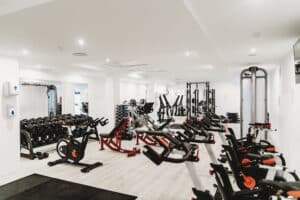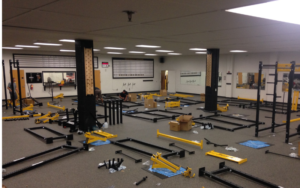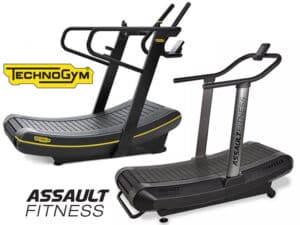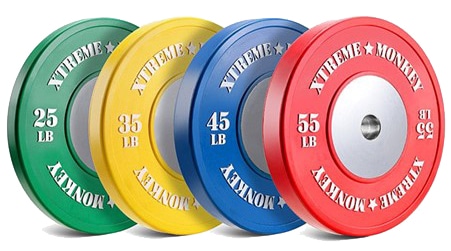Breaking Down the Numbers: A Analysis of Gym Startup Costs
Opening a gym can be a rewarding experience, but it’s important to understand the costs involved. From equipment to rent, there are a variety of expenses to consider. In this article, we’ll break down the numbers and provide a comprehensive analysis of gym startup costs.

Introduction: Why Understanding Gym Startup Costs is Essential
Before you can even think about opening a gym, you need to have a solid understanding of the costs involved. This is essential for several reasons.
First, understanding startup costs will help you determine whether or not opening a gym is financially feasible for you. If you don’t have the funds to cover the initial expenses, you may need to look into alternative funding options or delay your plans.
Second, knowing the expenses involved will help you create a comprehensive business plan. This will enable you to make informed decisions about everything from the type of gym you want to open to the equipment you’ll need.
Finally, having a clear understanding of startup costs will help you avoid common pitfalls and ensure that you’re able to maintain financial stability in the long term.
Understanding the Types of Gyms and Their Associated Costs
There are several different types of gyms, each with its own associated costs. Some of the most common types include:
Boutique gyms: These are typically smaller, specialized gyms that offer a specific type of workout (e.g., yoga, boxing, cycling). Startup costs for boutique gyms can vary widely depending on factors like location, equipment, and marketing expenses.
Franchise gyms: Franchise gyms are part of a larger chain and typically have a set business model and established brand. Startup costs for franchise gyms can range from $100,000 to $500,000 or more, depending on the franchise.
Independent gyms: These are gyms that are not part of a larger chain or franchise. Startup costs for independent gyms can vary widely depending on factors like location, equipment, and marketing expenses.
Expenses to Consider When Opening a Gym
When opening a gym, there are several expenses to consider. Some of the most significant costs include:
Rent: This is usually one of the largest expenses associated with opening a gym. The cost of rent can vary widely depending on factors like location and the size of the space.
Equipment: You’ll need to invest in a variety of equipment, from weights and cardio machines to mats and resistance bands. The cost of equipment can vary widely depending on the type and quality of equipment you choose.
Staffing: You’ll need to hire staff to manage the gym, including front desk staff, trainers, and cleaning staff. Salaries and benefits can be a significant expense.
Marketing: You’ll need to promote your gym to attract new customers. This can include expenses like website design, social media advertising, and print materials.
Utilities: You’ll need to pay for utilities like electricity, water, and gas.
Real-World Examples of Gym Startup Costs
To get a better idea of what gym startup costs look like in the real world, let’s take a look at a few examples.
Boutique gym: A yoga studio in a major city might cost around $50,000 to start up, including rent, equipment, marketing, and staffing expenses.
Franchise gym: A Planet Fitness franchise can cost anywhere from $700,000 to $3 million or more, depending on factors like location and the size of the gym.
Independent gym: An independent gym in a mid-sized city might cost around $100,000 to start up, including rent, equipment, marketing, and staffing expenses.
Planning Your Gym Budget
To ensure that you’re able to cover all of the expenses associated with opening a gym, it’s important to create a comprehensive budget. This should include estimates for all of the expenses we’ve discussed, as well as any additional expenses that may be specific to your situation.
When creating your budget, it’s a good idea to overestimate expenses whenever possible. This will help you avoid unexpected surprises down the road.
Funding Options for Gym Startups
If you don’t have the funds to cover the initial expenses associated with opening a gym, there are several funding options available.
Loans: You can apply for a business loan from a bank or credit union. Keep in mind that you’ll need to have a solid business plan and good credit to qualify.
Crowdfunding: You can use crowdfunding platforms like Kickstarter or Indiegogo to raise funds for your gym.
Investors: You can seek out investors who are willing to invest in your gym in exchange for a percentage of ownership or profits.
Avoiding Common Pitfalls When Estimating Gym Startup Costs
When estimating gym startup costs, it’s important to avoid common pitfalls that can lead to financial instability down the road. Some of the most common mistakes to avoid include:
Underestimating expenses: This can lead to unexpected surprises and financial instability.
Overestimating revenue: This can lead to unrealistic expectations and disappointment down the road.
Failing to plan for contingencies: Unexpected expenses can arise at any time, so it’s important to have a contingency plan in place.
Tips for Keeping Startup Costs Low
While opening a gym can be expensive, there are several ways to keep startup costs low. Some tips to consider include:
Starting small: You don’t need a massive gym to get started. Consider starting with a smaller space and expanding as your business grows.
Buying used equipment: You can save money by purchasing used equipment instead of buying new.
Negotiating with vendors: Don’t be afraid to negotiate with vendors to get the best possible prices.
Conclusion: The Importance of Balancing Startup Costs with Long-Term Success
Understanding gym startup costs is essential for anyone considering opening a gym. By creating a comprehensive budget and exploring funding options, you can ensure that you’re able to cover all of the expenses associated with opening a gym.
While it’s important to keep startup costs low, it’s equally important to balance those costs with long-term success. By avoiding common pitfalls and making informed decisions, you can create a gym that is both financially stable and successful in the long term.
For the most competitive pricing for Plates, Flooring and all your gym equipment, get in touch.








